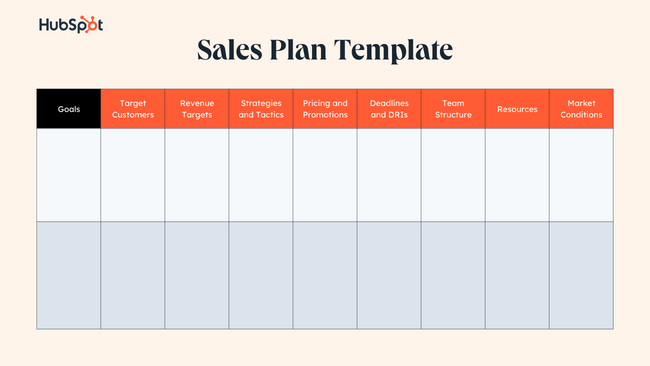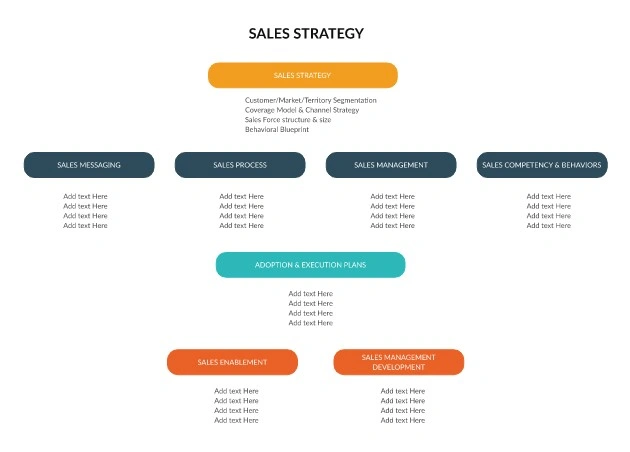Unlock the potential of your sales strategy with our comprehensive guide to mastering the sales planning process in 2024. From understanding the importance of sales planning to creating an effective sales plan, this blog post will provide you with the knowledge and tools you need to drive sales success.
Understanding the Sales Planning Process
The sales planning process is a crucial aspect of any successful business. It involves developing a clear roadmap for achieving sales objectives and targets. By understanding the sales planning process, you can effectively allocate resources, set realistic goals, and create strategies to drive sales growth.
To begin with, it's important to assess your current sales performance and identify areas for improvement. This includes analysing sales data, customer feedback, and market trends. By understanding your strengths and weaknesses, you can develop a sales plan that capitalises on your strengths and addresses any weaknesses.
Once you have a clear understanding of your current sales situation, you can start setting objectives and goals for your sales team. These objectives should be specific, measurable, achievable, relevant, and time-bound (SMART). By setting clear objectives, you can align your sales efforts towards a common goal and track progress effectively.
Furthermore, it is essential to analyse the market and competition to identify opportunities and threats. This involves conducting market research, studying competitor strategies, and understanding customer needs and preferences. By gaining insights into the market and competition, you can develop strategies that differentiate your products or services and provide value to your target customers.
Once you have identified key objectives and goals, it's time to develop sales strategies and tactics. This includes defining target customer segments, positioning your products or services, and determining pricing and promotional strategies. By developing effective sales strategies, you can optimise your sales process and maximise revenue generation.
Finally, implementing and tracking your sales plan is crucial for success. This involves allocating resources, assigning responsibilities, and setting up a system to monitor and evaluate performance. By regularly tracking and reviewing your sales plan, you can identify any deviations and take corrective actions to stay on track towards your sales goals.
In conclusion, mastering the sales planning process is essential for driving sales success. By understanding the importance of sales planning and following a step-by-step approach, you can create an effective sales plan that aligns your sales efforts, maximises revenue generation, and helps your business thrive in 2024.
Identifying Key Objectives and Goals
Identifying key objectives and goals is a critical step in the sales planning process. It involves setting clear targets that align with your overall business objectives and drive sales growth. By identifying key objectives and goals, you can provide direction to your sales team and measure their performance effectively.
To begin with, it's important to consider both short-term and long-term objectives. Short-term objectives focus on immediate sales targets and revenue generation, while long-term objectives focus on sustainable growth and market expansion. By setting a combination of short-term and long-term objectives, you can create a balanced sales plan that delivers results in the short term while setting a foundation for long-term success.
When setting objectives and goals, it's crucial to make them specific, measurable, achievable, relevant, and time-bound (SMART). Specific objectives clearly define what you want to achieve, while measurable objectives allow you to track progress and evaluate performance. Achievable objectives ensure that they are realistic and attainable, while relevant objectives align with your overall business strategy. Time-bound objectives have a specific deadline, which creates a sense of urgency and accountability.
Furthermore, it's important to involve your sales team in the goal-setting process. By seeking their input and involving them in the decision-making, you can increase their commitment and motivation to achieve the set objectives. Additionally, regularly communicating the objectives and goals to your sales team and providing them with the necessary resources and support will further enhance their performance and drive sales success.
In conclusion, identifying key objectives and goals is a crucial step in the sales planning process. By setting clear targets that are specific, measurable, achievable, relevant, and time-bound, involving your sales team in the goal-setting process, and providing them with the necessary resources and support, you can drive sales success and achieve your business objectives in 2024.
Analysing Market and Competition
Analysing the market and competition is a vital step in the sales planning process. It allows you to gain insights into customer needs and preferences, identify market opportunities and threats, and develop strategies that differentiate your products or services.
To begin with, conducting market research is essential to understand the dynamics of your target market. This includes analysing market trends, customer demographics, buying behaviours, and competitor offerings. By gaining a deep understanding of your target market, you can tailor your sales strategies and tactics to meet customer needs effectively.
Studying competitor strategies is another important aspect of analysing the market and competition. This involves researching your competitors' products or services, pricing strategies, distribution channels, and marketing tactics. By understanding your competitors' strengths and weaknesses, you can develop strategies that differentiate your offerings and create a competitive advantage in the market.
Furthermore, understanding customer needs and preferences is crucial for success. This can be done through surveys, interviews, feedback analysis, and customer segmentation. By understanding what your customers value and expect, you can develop products or services that meet their needs and provide value, resulting in increased sales and customer satisfaction.
In conclusion, analysing the market and competition is essential for developing effective sales strategies. By conducting market research, studying competitor strategies, and understanding customer needs and preferences, you can develop strategies that differentiate your offerings, meet customer needs, and drive sales growth in 2024.
Developing Sales Strategies and Tactics
Developing sales strategies and tactics is a critical step in the sales planning process. It involves defining target customer segments, positioning your products or services, and determining pricing and promotional strategies. By developing effective sales strategies, you can optimise your sales process and maximise revenue generation.
To begin with, it's important to identify your target customer segments. This involves understanding their demographics, preferences, and buying behaviours. By segmenting your target market, you can tailor your sales strategies and tactics to meet the specific needs of each segment, resulting in higher customer satisfaction and increased sales.
Positioning your products or services is another key aspect of developing sales strategies. This involves defining the unique value proposition of your offerings and communicating it effectively to your target customers. By positioning your products or services as the best solution to their needs, you can differentiate yourself from competitors and attract more customers.
Determining pricing and promotional strategies is also crucial for success. Pricing strategies should take into account factors such as production costs, market demand, and competitor pricing. By setting the right price for your products or services, you can maximise revenue generation and maintain a competitive edge in the market. Promotional strategies, on the other hand, involve selecting the right marketing channels, creating compelling messages, and implementing effective promotional campaigns. By promoting your offerings to the right audience through the right channels, you can increase brand awareness, generate leads, and drive sales.
In conclusion, developing sales strategies and tactics is essential for maximising revenue generation. By identifying target customer segments, positioning your products or services, and determining pricing and promotional strategies, you can optimise your sales process and achieve sales success in 2024.
Implementing and Tracking Sales Plan
Implementing and tracking your sales plan is a crucial step in the sales planning process. It involves allocating resources, assigning responsibilities, and setting up a system to monitor and evaluate performance. By regularly tracking and reviewing your sales plan, you can identify any deviations and take corrective actions to stay on track towards your sales goals.
To begin with, it's important to allocate the necessary resources to support your sales plan. This includes budgeting for sales activities, providing training and development opportunities for your sales team, and ensuring access to the required tools and technologies. By allocating resources effectively, you can empower your sales team and enable them to achieve their targets.
Assigning responsibilities is another key aspect of implementing your sales plan. This involves clearly defining roles and responsibilities for each member of your sales team, setting performance expectations, and establishing a system for accountability. By assigning responsibilities and holding your team members accountable, you can ensure that everyone is working towards a common goal and driving sales success.
Setting up a system to monitor and evaluate performance is crucial for tracking the progress of your sales plan. This can include regular sales meetings, sales reports, performance metrics, and feedback mechanisms. By monitoring performance, you can identify any deviations from the plan, analyse the root causes, and take corrective actions to get back on track.
In conclusion, implementing and tracking your sales plan is essential for achieving sales success. By allocating resources, assigning responsibilities, and setting up a system to monitor and evaluate performance, you can stay on track towards your sales goals and drive revenue growth in 2024.


